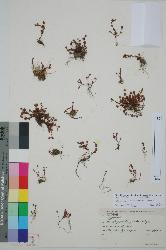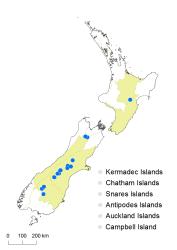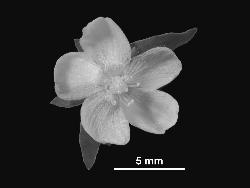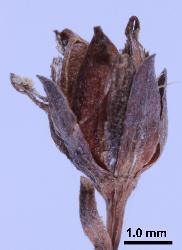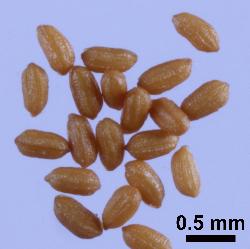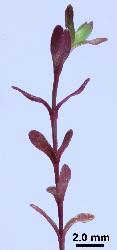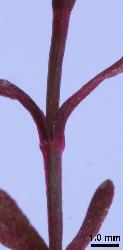- Taxon
- Gallery
Subshrub, rhizomatous. Stems up to 60 mm long, prostrate to decumbent, 0.3–0.4 mm diam., quadrangular, 4-lined, black glands absent. Leaves 1.0–10.0 mm long, 0.5–5.5 mm wide, obovate, broadly elliptic or oblong, glabrous, planar or often slightly sinuate, grey-green to olive-green, often entirely ruddy, particularly on margin and distally, abaxially sometimes slightly paler, reticulate tertiary veins absent; pellucid glands present; black glands absent; apex subacute to obtuse; margin slightly sinuate; base attenuate; sessile. Inflorescence terminal, in cymes, flowers solitary, sometimes up to 3, corolla 5.0–11.0 mm diam. Pedicels 0.4–0.5 mm long. Bracteoles absent. Sepals usually 5, occasionally 6, 2.5–5.0 mm long, 1.0–2.3 mm wide, unequal widths, oblong, narrowly elliptic or elliptic-oblong; pellucid glands absent; black glands absent; apex subacute, sometimes with a small apiculus; margin entire. Petals 2.8–5.8 mm long, 2.0–3.5 mm wide, longer than sepals, obovate or oblong, yellow, black glands absent, persistent after anthesis. Stamens not in bundles, 9, 1.6–2.5 mm long, shorter than petals; anthers 0.2–0.4 mm long, anther gland absent. Ovary 1.3–1.9 mm long, 1.0–1.6 mm wide, ovoid, often weakly trigonous in cross section. Styles usually 3, occasionally 2 or 4, 0.3–0.5 mm long, shorter than ovary. Fruit a capsule, 2.8–3.5 mm long, 1.5–2.5 mm wide, cylindric to globose, light brown. Seeds 0.6–0.7 mm long, c. 0.3 mm wide, oblong to elliptic-oblong, terete, orange brown to light yellow, longitudinal ribs usually distinct, apices obtuse or rounded.
H. rubicundulum is distinguished by an absence of black glands, its rhizomatous growth habit and decumbent, spreading or upright quadrangular and 4-lined stems, leaves that are grey-green to olive-green and usually ruddy and without sinuate margins, and seeds that are elliptic-oblong and with distinct longitudinal ribs (see table of distinguishing characters under H. minutiflorum).
North Island: Volcanic Plateau, Southern North Island.
South Island: Westland (northern), Canterbury, Otago.
Grows mainly on the margins of lakes and tarns and other wet depressions and seepages in drought-prone and dry-climate areas of inland South Island and eastern North Island (Hawkes Bay). Usually occurs in the zones that experience brief or erratic periods of ponding. Occasionally collected from damp grassland and tussockland.
Flowering: Sep.–Apr.
n = 8, 2n = 16 (Hair & Beuzenberg 1959, as H. japonicum; de Lange et al. 2004, as H. aff. japonicum (b)).



